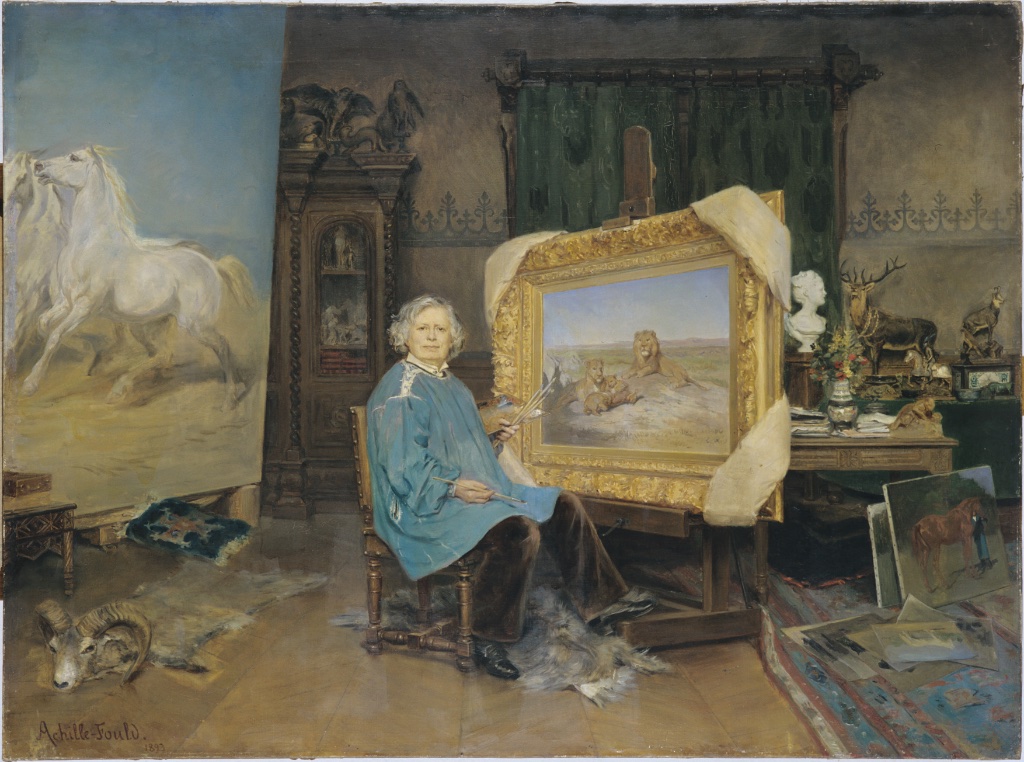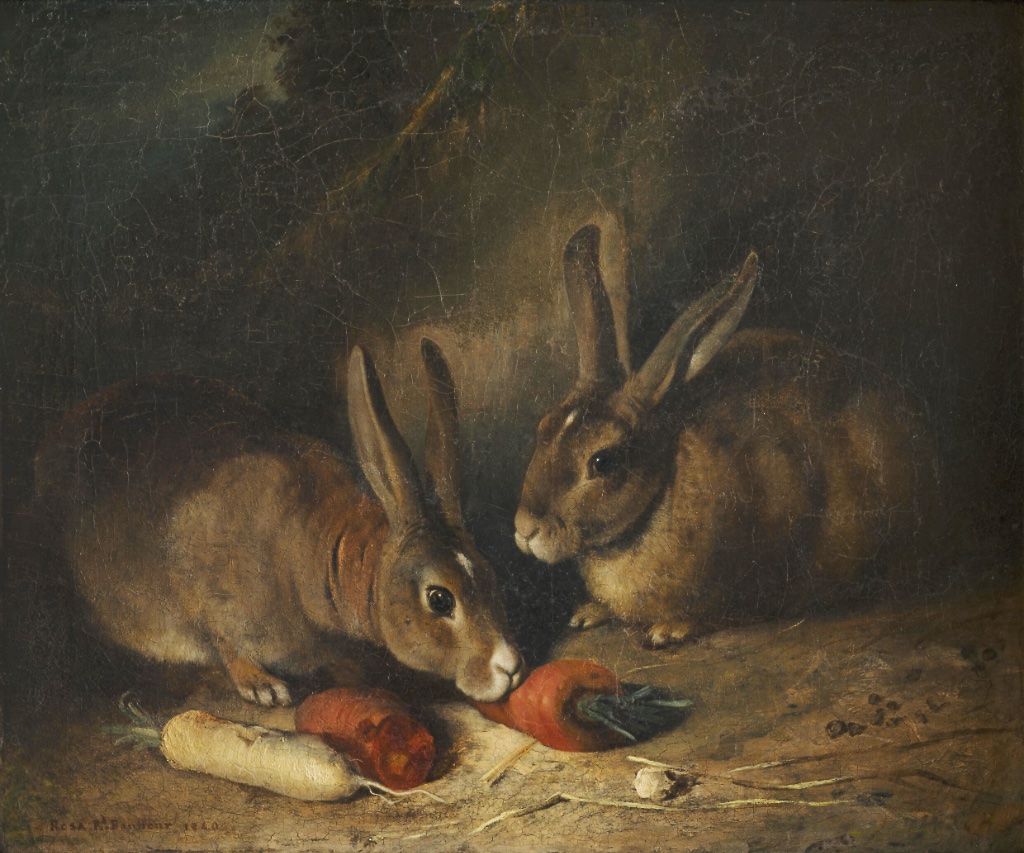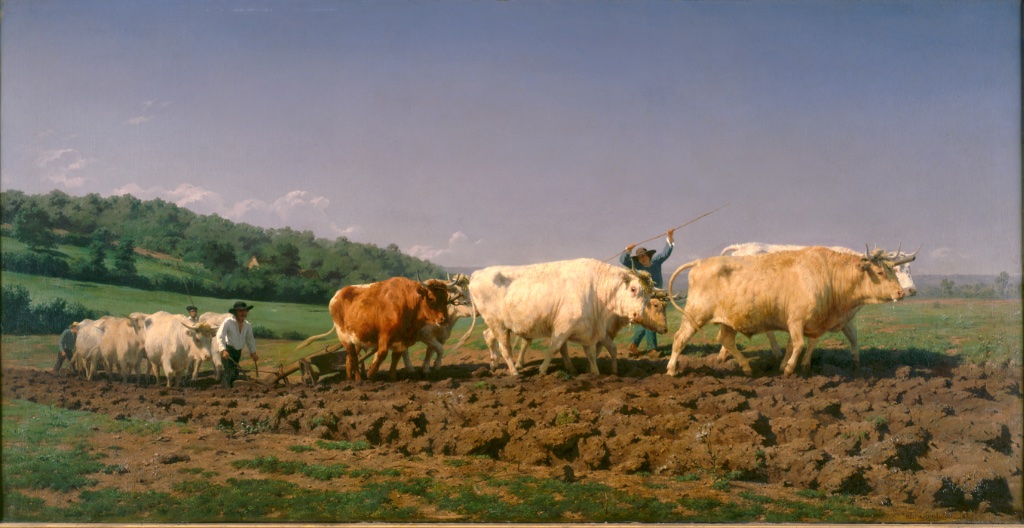
This must be the season for exhibitions of the work of ballsy women artists in Paris’s museums. It’s about time. While I used the word to describe Alice Neel, whose work is on show at the Centre Pompidou, it could equally be applied to Frida Kahlo (Palais Galliera), Joan Mitchell (Fondation Louis Vuitton) and now Rosa Bonheur (1822-99), a retrospective of whose work opened last week at the Musée d’Orsay on the occasion of the bicentenary of her birth.
One of the best-known animal painters of the 19th century, Bonheur succeeded and prospered in spite of being all the things nice women of the time were not supposed to be: a professional who not only did not marry but lived in a relationship with her childhood friend, Nathalie Micas, until the death of the latter in 1889.

Bonheur made no attempt to hide her difference. In an 1893 portrait of her sitting at her easel by Georges Achille-Fould, a pair of men’s trousers and shoes peek out from under her artist’s smock. A woman wearing trousers in the 19th century who wasn’t George Sand? I found out later just how difficult that was: it was actually illegal in France at the time, according to a law passed during the French Revolution. To win the right to wear them, a woman had to apply to the prefecture of police for special permission after providing a good reason for such an unreasonable demand. Bonheur’s was that she often attended livestock markets to do research for her work. Women had to reapply every six months for this special privilege. Apparently, George Sand had to go through the same process. Unbelievably, this law remained on the books until 2013.

But what of her work? Bonheur’s talent was such that she was only 19 years old when she first exhibited at the Salon, with “Two Rabbits” (1841), a work that Dürer himself wouldn’t have blushed at painting, with its fine tactile rendition of the fur of two inscrutable long-eared rodents. Within a few years, she was winning medals for her work at the Salon, notably with “Plowing in the Nivernais” (1849).
True to her last name, which means “happiness,” Bonheur seems to have had a sunny, loving disposition. One of the things she loved most, along with her companions Micas and later Anna Klumpke, was animals. All animals – she even kept (and cuddled with) lions on her estate outside of Paris – but especially dogs. Some of my favorite pictures in this show are the pastel drawings of hounds and the painting (pictured at the top of this page) of an abject canine named Barbaro, who is short-chained to a wall in such a way that he can’t lie down or reach his bone.
The painting that really made her rich and hugely famous in France and around the world, however, was the monumental “The Horse Fair” (1856), which now belongs to the Metropolitan Museum in New York. Unfortunately, because it is too fragile to travel, the exhibition has only a one-quarter-size version painted later by Bonheur and Micas, but a full-size sketch of it is also on show.

Animals have plenty of personality in her paintings, in which she attempted to capture their souls (a very modern attitude at a time when animals were not considered to have souls). Look closely at their eyes. The eye of the drooling white ox in the center of “Plowing in the Nivernais,” for example, expresses his fury at being constrained and misused by humans, while the eyes of the rearing horses in “The Horse Fair” show their fear and incomprehension at being manhandled. There is no sentimentality in this expressiveness – it feels totally real.
When she was 67 years old, a new chapter opened in Bonheur’s life. Nathalie Micas died, and a new companion, the much younger American artist Anna Klumpke, arrived on the scene. The former had been Bonheur’s helpmate in her work, and the latter became her biographer and sole heir.
Around the same time, Bonheur became fascinated by Native Americans thanks to Buffalo Bill’s Wild West Show, which was visiting France. She appreciated their way of living in harmony with their environment and their respect for animals. Although she never managed to fulfill her dream of visiting the United States, where her work was wildly popular, she drew and painted some of the Lakota Sioux performers in the show and other Native Americans from pictures she found in books.
Now that Bonheur’s work is receiving the attention that evaded it during much of the 20th century, you may want to visit her former home, the Château de By (a.k.a., the Château de Rosa Bonheur) in Thomery, France, which is celebrating her bicentenary with its own exhibition, “Rosa Bonheur Intime” (through January 30, 2023). Reserve in advance for the mandatory tour, and click here for instructions on how to get there.
Bonheur would certainly be happy to know that she and her future female colleagues are now firmly in the limelight.
See our list of Current & Upcoming Exhibitions to find out what else is happening in the Paris art world.
Favorite
A comment from reader Karina:
“Fabulous!!! I love Rosa Bonheur, her work, her life story. Wish I were there to see the show, and make a pilgrimage to her home, now a museum. She really did capture animals’ souls, thankfully, and most likely paved the way for animal protection organizations, of which PETA is probably her grandchild.”